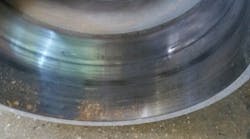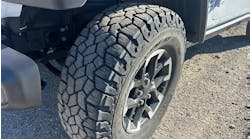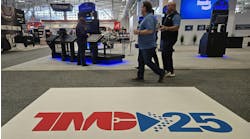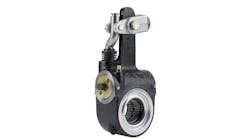The advent of the new National Highway Traffic Safety Administration (NHTSA) stopping distance rule (Phase 1 implementation, August 1, 2011, FMVSS-121) mandated a 30 percent improvement in air braking performance for the vast majority of new heavy trucks in operation. Since then, fleets have been weighing their options regarding the appropriate brake components to use to:
1. Meet the requirement .
2. Maintain a reasonable cost per mile ratio.
Wheel end choices associated with whatever foundation brakes a fleet decides upon will have ramifications long after the initial spec is added to new vehicles. Most fleets basically have three choices:
1. Stay with standard drum brake configuration, if that option meets the new regulation.
2. Beef up drum brake performance by using premium wheel end packages and/or wider brakes.
3. Switch to disc brakes.
A System
Today, like anything on a commercial vehicle, the brake package is a system, and that system has to meet the customer’s needs and, at the same time, meet all FMVSS 121 standards. It can’t be stressed enough that an individual fleet’s unique operation profile will make the difference as to what brake product is right for them.
For over-the-road linehaul fleets, a standard drum brake package from the OEM may be the best answer, whereas a “grossed out” tank or a steel flat or paper roll hauler may need a premium package, or even disc brakes, to get to the trade or maintenance cycle they want.
If a fleet prefers to stay with what they know – drum brakes – there are ways to make that option a reliable choice that will meet the two previously noted criteria: best performance and total cost of ownership.
Drum and Lining Combination
It is paramount to spec and maintain the right drum and lining combination for your operation because the lining and mating surface of the drum work in tandem.
Close coordination between drum and lining manufacturers have produced materials that, when working together, can stop a vehicle shorter and faster than ever before. The idea is to operate at the best temperatures and friction co-efficient where wear and noise are as close to zero as possible.
If you stay with drum brakes, spec’ing a premium drum, like Webb’s Vortex Unlimited, can help add performance and reduce operating costs. Its patented design features external cooling ribs that conduct heat away from brakes, which can extend the life of the brake drum by an extra 25 percent.
Friction manufacturers can offer aggressive linings, which definitely help with stopping, but at what cost? If that aggressive lining means you have to change drums more often, the tradeoff may not make sense. You can run aggressive and long-living friction, but eat the mating surface in a week or a month.
Life of the drum (mating surface) is made and broken in the friction surface area, so you need to be certain you’ve got the right package of drum and lining.
There are many quality friction materials with great life/wear characteristics, and good drum suppliers are constantly testing the life of their drums with multiple combinations of linings. At the end of the day, you should feel comfortable that the drum and lining combination you’re getting as first fit is right for your fleet.
Make sure you know who the manufacturers are, where the products are made, if test procedures and data are reliable and if they will support you after the sale.
Stay with it
Once you have the right combination of drum and lining spec’d for your vehicles, it is best to stay with it through the life of the vehicle. Uptime means everything to the bottom line of a fleet. If you save pennies on replacement parts rather than staying with what you know works could, and likely will, end up costing you.
“Penny wise and pound foolish” seemed to be a good axiom to use here but to be sure, we looked up the meaning which is: “to be extremely careful about small amounts of money and not careful enough about larger amounts of money.” That larger amount of money is what you lose when your trucks or trailers are down for maintenance rather than delivering product.
Maintenance
Even with the best drum and lining combinations, regular maintenance is required to maximize performance and minimize cost. Additionally, brakes and their components are right at the top of Federal Motor Carrier Safety Administration’s Compliance, Safety, Accountability (CSA) program’s penalty measures and roadside inspection out-of-service infractions.
Therefore, it’s vitally important that whether you stay with drum brakes or make the switch to disc brakes, you make the right decisions about the individual components that make up the system and maintain them religiously using quality replacement parts.
Webb offers “Training in a Box” as well as on-site training about wheel end maintenance for fleet technicians.
Jim LeClaire is the national OEM sales manager for the OEM business unit of Webb Wheel Products. He has more than 25 years of industry experience, beginning his career as a vehicle technician. He has served in many capacities, including field service and warranty management, engineering support, advisement in fleet operations and maintenance and various sales and management roles. Webb Wheel (www.webbwheel.com) manufactures hubs, brake drums and rotors for medium and heavy duty trucks, trailers and buses. It is a Marmon Highway Technologies/Berkshire Hathaway Company (marmonhitech.com), which, together with its subsidiaries, supports the highway transportation industry worldwide with a wide range of high-quality products and services.



